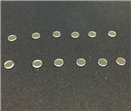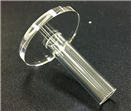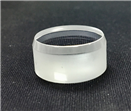

Time:2024-03-08
Sapphire lenses are optical components made of sapphire material, which have excellent optical and physical properties. By utilizing its transparency, refractive index, and reflection properties to control the propagation and manipulation of light, and through appropriate design and manufacturing, it is possible to refract, reflect, and transmit light to meet specific optical requirements and applications. The following are the characteristics of sapphire.
1. Material characteristics: Sapphire is a single crystal material with excellent transparency and can work in the visible and infrared light range. Has high hardness, high corrosion resistance, high heat resistance, and good mechanical strength.
2. Transmittance: Sapphire lenses have good transmittance in the visible light range, usually exceeding 80%. In the infrared range, especially in the near-infrared and mid infrared bands, its transmittance is very high, reaching over 90%.

3. Corrosion resistance: Sapphire has excellent corrosion resistance and strong resistance to acids, alkalis, and certain solvents, which makes sapphire products widely used in harsh environments.
4. Hardness and wear resistance: Sapphire has excellent hardness and wear resistance, which makes it very useful in applications that require resistance to scratches and wear.
5. Optical applications: commonly used in laser systems, optical sensors, optical instruments, and optical equipment under high temperature and high pressure environments, can be used as optical windows, substrates, diffraction elements, etc. to transmit, reflect, and split light beams.
Sapphire is a transparent material with a wide range of light transmission, covering both visible and infrared light bands. This enables sapphire lenses to transmit light without causing significant absorption or scattering. It should be noted that the manufacturing and processing of sapphire materials are relatively complex and costly, and their widespread application in engineering and scientific fields benefits from their excellent optical performance and durability.






Tel
Mobile phone
Customer service
TOP